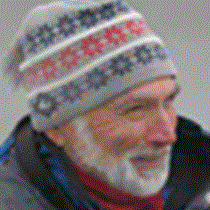Glacier Bay
We awoke just outside of Bartlett Cove within Glacier Bay. A blanket of low clouds hung brooding over the bay, but we were grateful for no rain. Sea otters watched as we cruised by between bouts of scrubbing, rubbing, and washing their fur. Blows from four humpback whales still hung in the still air as one set of flukes after another slid below the waters glassy surface.
The sounds of birds poured off the Marble Islands as we approached. Tufted puffins, glaucous-winged gulls, and black-legged kittiwakes flew about; others sat on nests or gawked at curious people. The sound of oystercatchers rang in the distance, while pelagic cormorants commuted back and forth to their nests. Eighty five percent of all sea birds are colonial nesters in order to help synchronize their breeding, find new nest mates, add to their safety from predators, and find the direction to the best foraging from returning birds. Well over 200 Steller sea lions were hauled out on the north end of the island. The western population of these eared seals has plummeted placing them on the Endangered Species List. Fortunately, the colonies in Southeast Alaska are increasing and doing well.
We passed beautiful scenery under sunny skies as we motored north and arrived at Margerie Glacier by noon. Glaciers that flow from the mountains and end in the sea are called tidewater glaciers. Tons of ice float out onto the sea and break apart in occasionally magnificent calving events. Although calving usually means giving birth, in glaciers it describes the spectacular demise of ice falling from the glacier face to its end in the sea. You should consider yourself lucky if you see more than a few chunks of ice splash into the water at one time. We were lucky. The photo for today shows the best part of a calving. The ice falls hundreds of feet into the water causing a big outward splash shown by the white water in the left of the photo. Seconds later, in the best part of the show, the water rebounds and shoots explosively skyward. It looks almost like an explosion rather than water bouncing up.
Later we cruised on to Jaw Point where a magnificent view of Johns Hopkins Glacier suddenly revealed itself. It makes your jaw drop and your hand point. We finished the day with an invigorating hike through a young spruce forest near Bartlett Cove.
We awoke just outside of Bartlett Cove within Glacier Bay. A blanket of low clouds hung brooding over the bay, but we were grateful for no rain. Sea otters watched as we cruised by between bouts of scrubbing, rubbing, and washing their fur. Blows from four humpback whales still hung in the still air as one set of flukes after another slid below the waters glassy surface.
The sounds of birds poured off the Marble Islands as we approached. Tufted puffins, glaucous-winged gulls, and black-legged kittiwakes flew about; others sat on nests or gawked at curious people. The sound of oystercatchers rang in the distance, while pelagic cormorants commuted back and forth to their nests. Eighty five percent of all sea birds are colonial nesters in order to help synchronize their breeding, find new nest mates, add to their safety from predators, and find the direction to the best foraging from returning birds. Well over 200 Steller sea lions were hauled out on the north end of the island. The western population of these eared seals has plummeted placing them on the Endangered Species List. Fortunately, the colonies in Southeast Alaska are increasing and doing well.
We passed beautiful scenery under sunny skies as we motored north and arrived at Margerie Glacier by noon. Glaciers that flow from the mountains and end in the sea are called tidewater glaciers. Tons of ice float out onto the sea and break apart in occasionally magnificent calving events. Although calving usually means giving birth, in glaciers it describes the spectacular demise of ice falling from the glacier face to its end in the sea. You should consider yourself lucky if you see more than a few chunks of ice splash into the water at one time. We were lucky. The photo for today shows the best part of a calving. The ice falls hundreds of feet into the water causing a big outward splash shown by the white water in the left of the photo. Seconds later, in the best part of the show, the water rebounds and shoots explosively skyward. It looks almost like an explosion rather than water bouncing up.
Later we cruised on to Jaw Point where a magnificent view of Johns Hopkins Glacier suddenly revealed itself. It makes your jaw drop and your hand point. We finished the day with an invigorating hike through a young spruce forest near Bartlett Cove.




